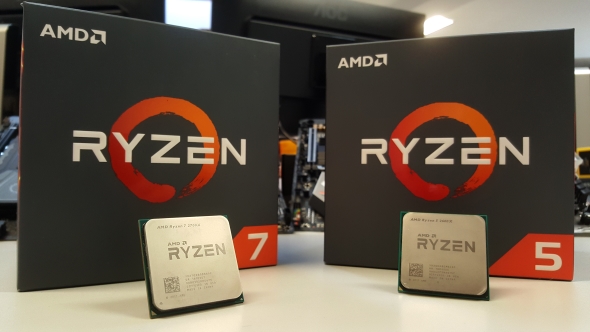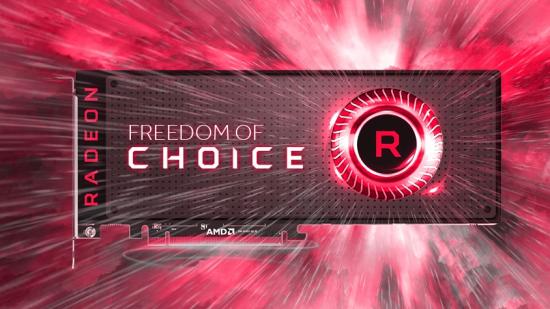AMD have gone on the attack against Nvidia, with Scott Herkelman’s manifesto, Radeon RX Graphics: A Gamer’s Choice, calling out “anti-competitive conditions” in the market in thinly veiled references to Nvidia’s contentious GeForce Partner Program.
Check out our pick of the best graphics cards you can buy today.
Herkelman also states that “over the coming weeks, you can expect to see our add-in board partners launch new brands that carry an AMD Radeon product.” Asus have just announced their AREZ gaming cards exclusively carrying AMD GPUs, and it looks like there are more on the way from the likes of Gigabyte and MSI.
This is in direct response to Nvidia’s GPP initiative demanding that a brand Nvidia provide financial marketing assistance for must be GeForce-exclusive.
So far this seems to be the only result of the GeForce Partner Program – AMD get their own exclusive graphics card ranges without having to pay a penny for themandget to have a dig at Nvidia at the same time. Doesn’t seem like it’s limited the GPU choice of gamers and sounds like an AMD win to me…
Herkelman goes on to outline four key values that AMD sees these new Radeon brands offering.
- A dedication to open innovation
- A commitment to true transparency through industry standards
- Real partnerships with real consistency
- Expanding the PC gaming ecosystem
He’s not only railing against GPP in his blog, but also against Nvidia’s G-Sync technology for “penalizing gamers with proprietary technology “taxes” and limiting their choice in displays.”
Nvidia’s G-Sync uses expensive, proprietary hardware to achieve GPU frame synchronisation, as opposed to AMD’s open FreeSync approach. FreeSync works off the Adaptive Sync standard and means it costs nothing for monitor manufacturers to use it. G-Sync, on the other hand, requires specific hardware which adds cost and limits the number of displays that get it. And Nvidia have also steadfastly refused to provide support for the Adaptive Sync standard.

AMD’s commitment to the open source approach to hardware manufacturing, and brave attempts to martial their more limited resources to target future challenges, have given the company a sort of David, of Goliath fame, feel. Couple that with their ‘fine wine’ hardware often improving beyond potentially sticky launches and they’re able to generate a real positive following even if their hardware doesn’t always hit the mark.
It’s why I was probably more positive than most about the RX Vega 64 when it first launched – I really appreciate the way they work and they keep on working to get the most out of their hardware.
And that’s why the Ryzen CPUs are going to start taking chunks out of Intel’s market share in the gaming space. There’s simply no reason to pick the more expensive Intel core any more – AMD have kept going and their silicon is more solid than ever.

But this sort of battle-cry, this attempt at inciting increased tribalism in PC gaming, seems a little unnecessary. Scott’s Manifesto is a little too salty for my tastes. It feels overly aggressive; talking of “gamer taxes” and the ever-emotive freedom of choice. He’s talking about Radeon RX graphics being the gamer’s choice because of the ethos behind them, and not because they perform better than the competition.
They don’t. But you should sacrifice gaming performance to stand up for AMD.
I am aware I’m in the minority in thinking that some of Nvidia’s GPP makes sense. I can understand why a company wouldn’t want to finance the co-marketing of their direct competitors, but I can also understand why some people see any strings being attached to such marketing partnerships as anti-competitive.
I just don’t understand why there needs to be this sort of aggressive tribalism in the industry, especially from the people who want to be seen as ‘the good guys.’
